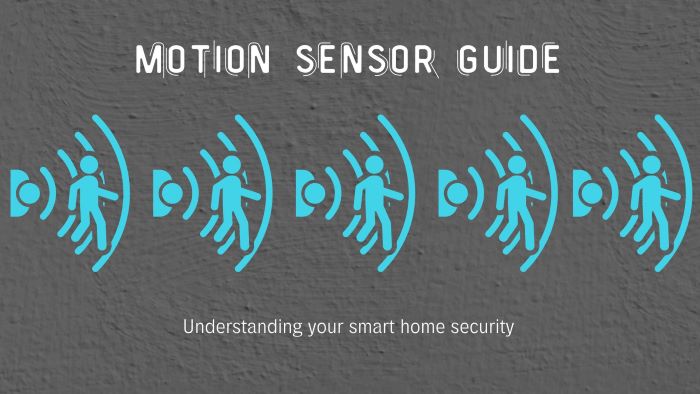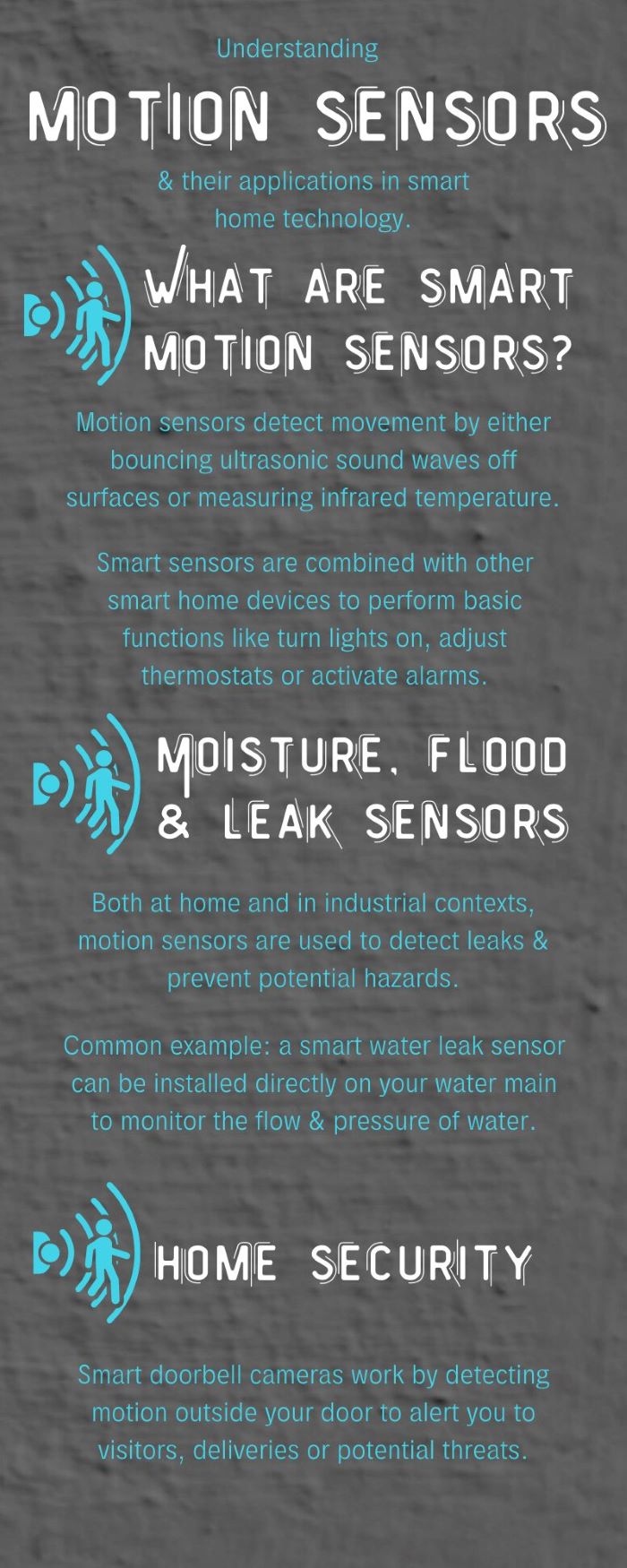
Modern motion sensors have been around for decades, and smart home sensors are bringing this long-appreciated technology to the next level. With the latest and greatest in detection methods, there are myriad applications to make your home life safer and more convenient.
Motion sensors detect movement using either ultrasonic sound waves or passive infrared (PIR) monitoring. Ultrasonic waves bounce off surfaces to detect movement, while PIR sensors measure temperature. Both can be combined with other smart home devices to perform basic functions like turn lights on, adjust thermostats or activate alarms.
Some smart devices will learn your habits and routines to automate everyday things. For example, smart devices can turn indoor lights on when you arrive home from work, or lock every door and window when it's time for bed.
The usefulness of smart motion detection goes way beyond the convenience of everyday life. Both at home and in industrial contexts, motion sensors are used to detect leaks and prevent potential hazards.
A smart water leak sensor can be installed directly on your water main to monitor the flow and pressure of water. In case of malfunction, the sensor will push an alert to your mobile devices or smart home hub - much better than discovering a leak when it's already caused damage.
Security is a classic application of motion sensor technology. Some common examples would be motion detector lights or door and window sensors. Smart doorbell cameras work by detecting motion outside your door to alert you to visitors, deliveries or potential threats.

Smart home devices with battery powered or wireless motion sensors have myriad uses - to control your smart thermostat, smart lights or improve your home security system. If you're interested in taking advantage of this technology, research your options to find the best smart home sensors for your needs.